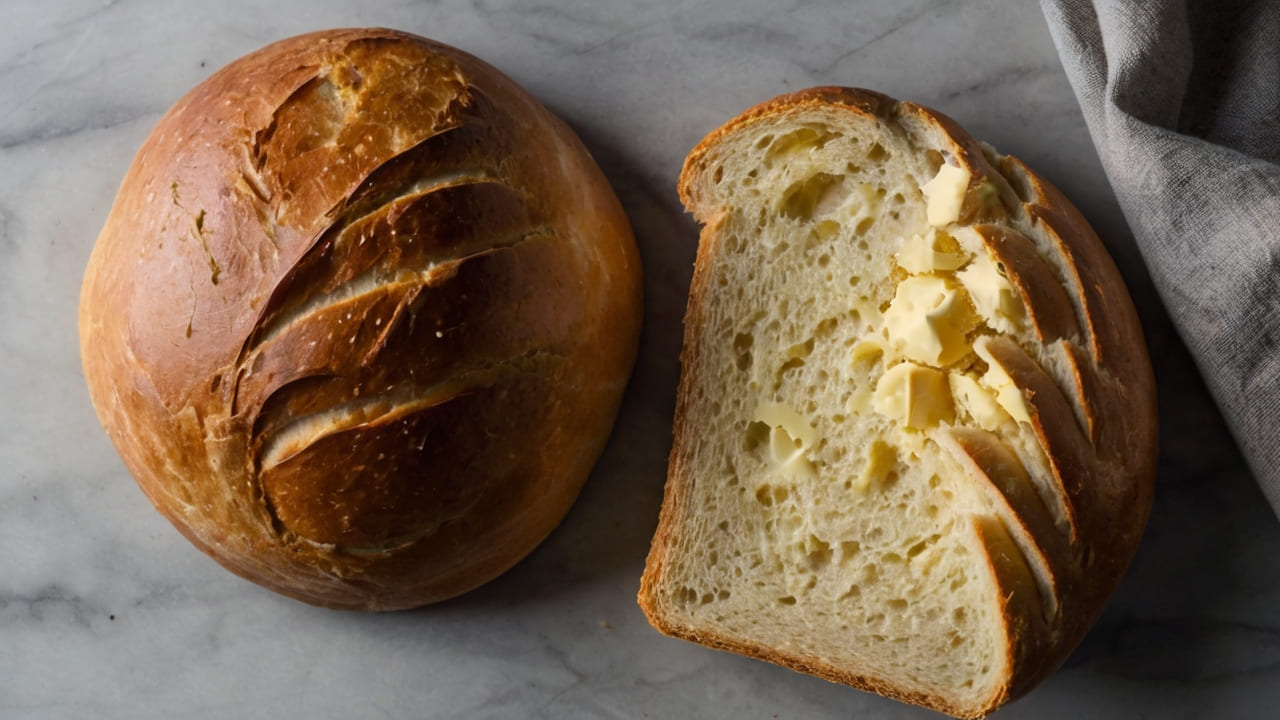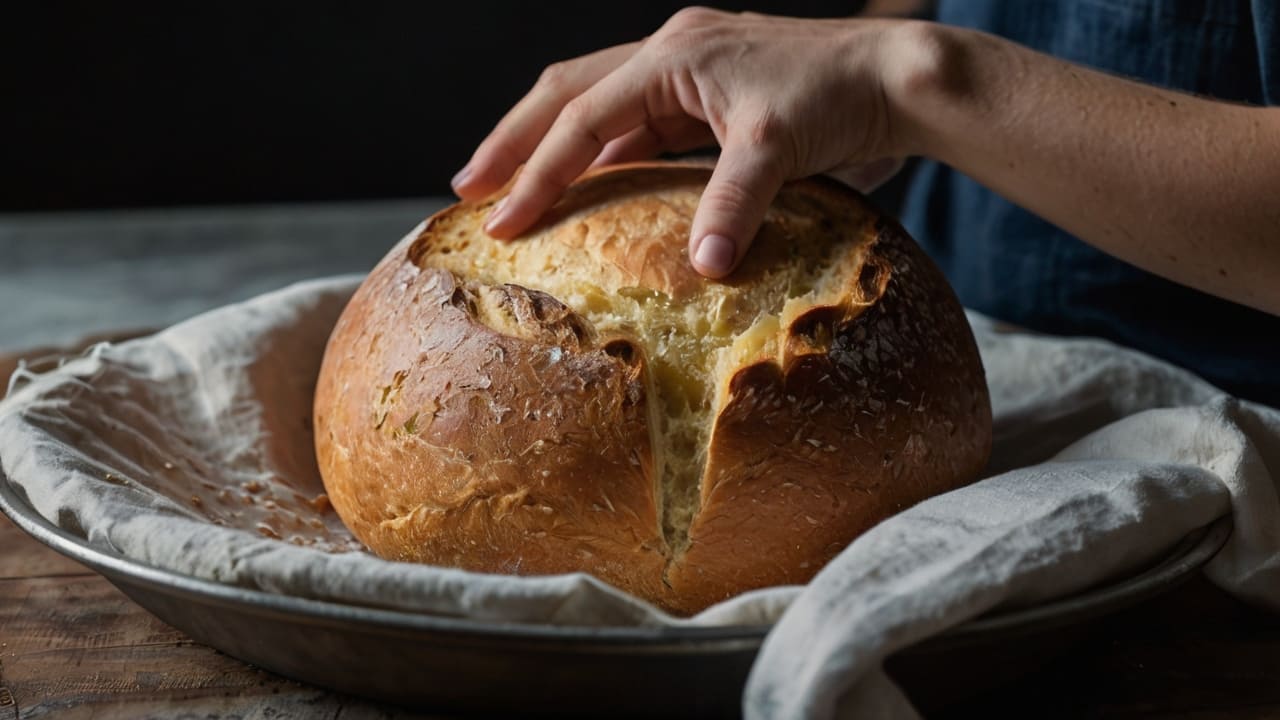
Should I Brush Bread with Butter Before Baking? Expert Tips for Perfect Crust
Why Brushing Bread with Butter Before Baking Enhances the Crust

When it comes to baking bread, one question that often arises is whether to brush the dough with butter before putting it in the oven. This simple step can have a significant impact on the bread crust and overall taste. Brushing bread with butter before baking can enhance the crust by adding a golden color, a richer flavor, and a slight sheen. The butter melts during the baking process, creating a crisp outer layer while keeping the inside soft and moist.
The bestbreadmaker recommends brushing your bread dough with butter to achieve a crust that's both visually appealing and full of flavor. By applying butter, you also prevent the crust from becoming too hard or dry, which is a common issue in homemade bread. Butter adds richness and depth to the bread’s aroma, creating that bakery-quality finish.
Techniques for Brushing Butter on Bread Dough
Now that we know the benefits of butter, the next step is understanding how to apply it correctly. Butter application on bread dough can vary depending on the result you're looking for. Whether you want a glossy finish or a subtle, flaky crust, following these techniques can help you achieve your desired outcome.
- Timing: The optimal time to brush butter on bread dough is just before baking. At this stage, the dough is ready to go into the oven, and the butter will melt and coat the surface evenly.
- Amount of Butter: Use a pastry brush to apply a thin, even layer of melted butter. Be cautious not to overdo it, as too much butter can lead to a soggy crust. A small amount can go a long way in achieving that perfect golden-brown color.
- Reapply During Baking: For an extra shiny finish, consider brushing another layer of butter halfway through the baking process. This step enhances the visual appeal and adds an extra layer of flavor to the bread.
Impact of Butter on Bread Dough and Baking Process

Understanding how butter interacts with dough during the baking process is key to mastering this technique. Butter plays a crucial role in altering both the texture and flavor of the bread. When melted, butter creates a moist and tender crumb while giving the crust a more luxurious mouthfeel.
Additionally, butter can impact the bread's baking temperature. Because butter contains fat, it can slow down the browning process, which may require you to bake the bread a bit longer. However, this extended baking time helps the bread develop a deep, rich flavor without burning the crust.
This interaction is especially noticeable in yeast-based bread, where the addition of butter helps control the rise and creates a more uniform crumb structure. Compared to other fats, like oil or shortening, butter adds a unique flavor profile that cannot be replicated.
Alternatives to Butter for Brushing Bread Before Baking
While butter is a popular choice for brushing bread, there are alternatives that can also give you excellent results. Egg wash and oil are two common substitutes that can create different effects on the bread's crust.
-
Egg Wash: This is a mixture of beaten egg and water or milk. Brushing the bread with egg wash before baking creates a shiny, golden crust with a bit more firmness. It’s especially useful for enriched doughs, like brioche, where a glossy finish is desired.
-
Oil: Olive oil or other cooking oils can also be brushed onto bread dough to create a different type of crust. Oil tends to produce a softer, chewier crust compared to butter, and it can add a distinct flavor depending on the type of oil used.
Each of these alternatives has its own set of benefits. For those seeking a vegan option, oil is a great substitute for butter. Egg wash offers a more pronounced shine, while butter provides richness and a tender crust.
Troubleshooting Common Issues with Brushing Butter on Bread Dough

While brushing bread with butter seems straightforward, it can sometimes lead to unexpected results. Here are some common issues and how to troubleshoot them:
-
Uneven Crust Coloring: If the crust color varies across the bread, it might be due to uneven butter application. Ensure that the butter is spread evenly across the entire surface of the dough, and reapply if necessary.
-
Soggy Crust: Overapplying butter can lead to a crust that's too soft or even soggy. To avoid this, use a light hand when brushing the butter on the dough. You can also try brushing the butter later in the baking process to prevent the crust from absorbing too much moisture early on.
-
Overly Crisp Crust: If your bread crust turns out too crisp or hard, it could be due to the type of fat used or the baking temperature. Butter generally creates a softer crust, so consider lowering the baking temperature slightly or using less butter if you prefer a more tender crust.
By keeping these tips in mind, you can troubleshoot common bread baking issues and perfect your technique.
Best Practices for Baking Bread with a Perfect Crust
Achieving a perfect crust involves more than just brushing with butter. To truly master the art of bread baking, you'll need to consider various factors that impact the final result.
-
Oven Position: Place your bread in the middle rack of the oven to ensure even heat distribution. This helps the bread bake uniformly and prevents the crust from burning too quickly.
-
Steaming the Oven: Creating steam in the oven during the first few minutes of baking can significantly improve the crust's texture. You can do this by placing a tray of water at the bottom of the oven or by misting the dough with water before baking.
-
Combining Techniques: For the best results, try combining butter brushing with other techniques like steaming and using the right oven temperature. This multi-faceted approach will help you achieve that bakery-quality crust with a golden-brown color and rich flavor.
-
Choosing the Right Bread Type: Not all bread recipes respond the same way to butter brushing. Rich breads like brioche or challah benefit the most from a butter glaze, while leaner doughs, like baguettes, may require different techniques to achieve the desired crust.
FAQ: Frequently Asked Questions
-
Can I use margarine instead of butter for brushing bread? Yes, you can substitute margarine for butter, though the flavor and texture may vary slightly. Margarine can create a similar golden crust, but it lacks the rich flavor that butter provides.
-
Should I brush bread with butter before or after baking? Brushing bread with butter before baking helps create a crisp, golden crust. However, brushing with butter after baking can also add shine and a bit of extra flavor, especially if the bread has cooled slightly.
-
Does brushing bread with butter make it soggy? Brushing with too much butter can make the crust soggy. It's essential to apply a thin, even layer to achieve the right balance between flavor and texture.
-
How does butter affect bread rise? Butter can slightly affect the rise of bread by adding fat to the dough, which can inhibit gluten formation. However, when applied just to the surface before baking, it doesn't significantly alter the dough's rise.
This guide incorporates best practices for achieving the perfect bread crust by brushing with butter, tips for troubleshooting, and exploring alternative methods. Whether you’re a seasoned baker or just starting out, these expert techniques will elevate your bread-baking game, ensuring a deliciously crisp and flavorful crust.


